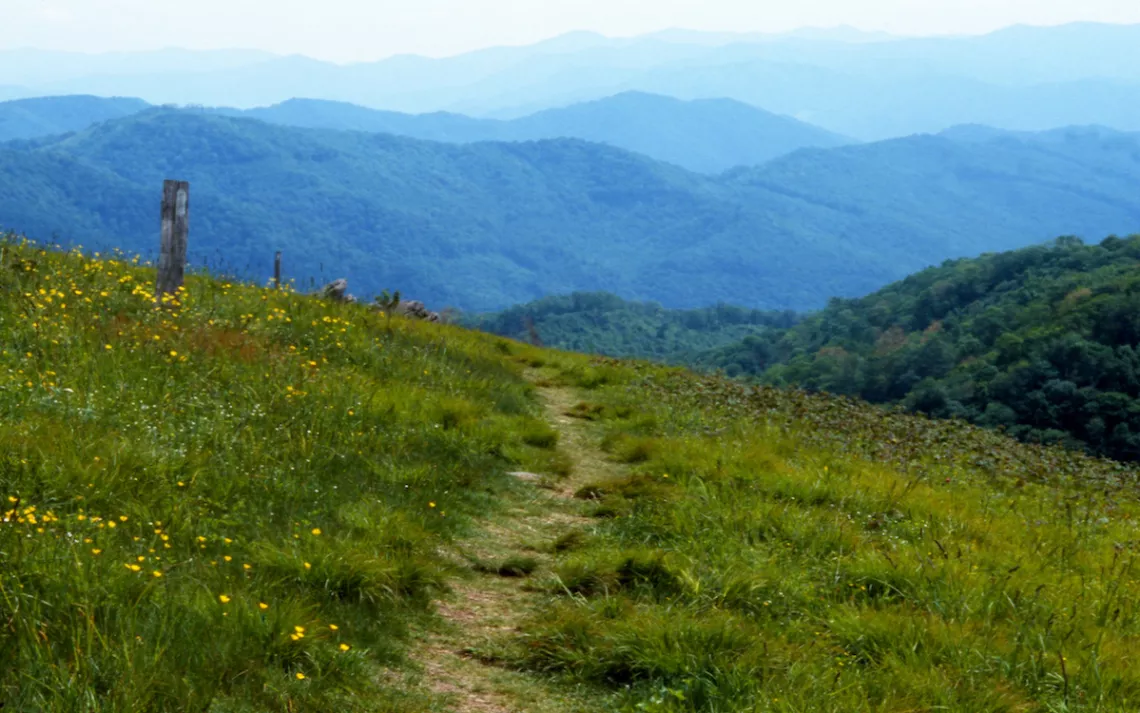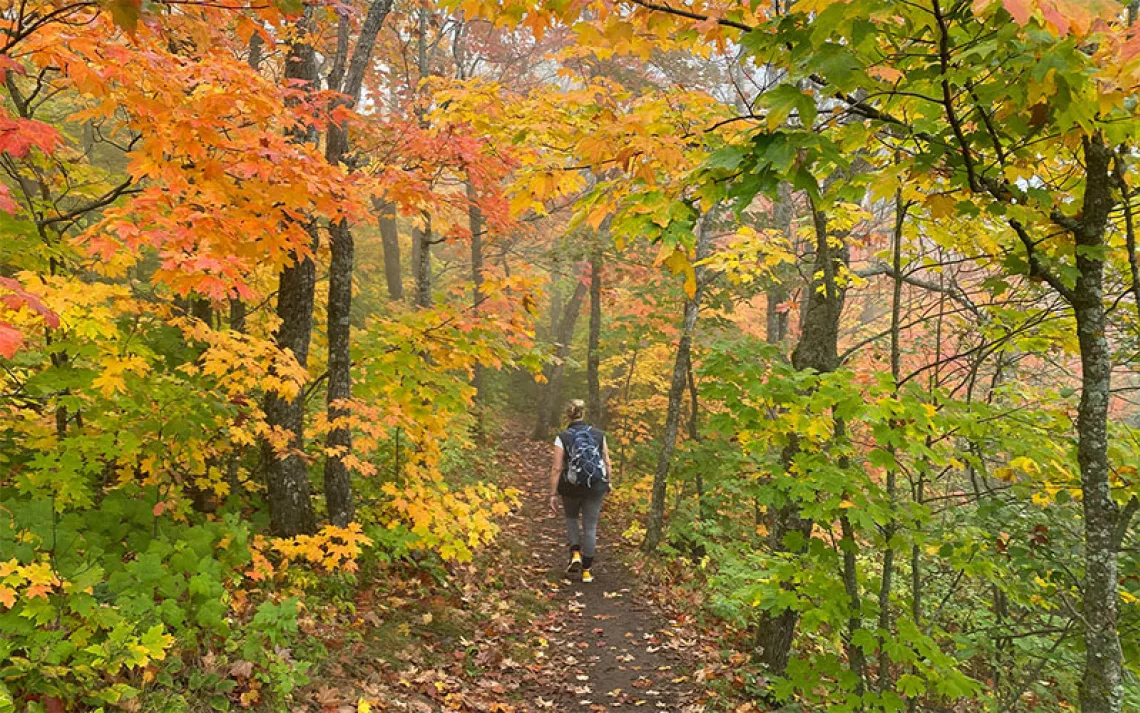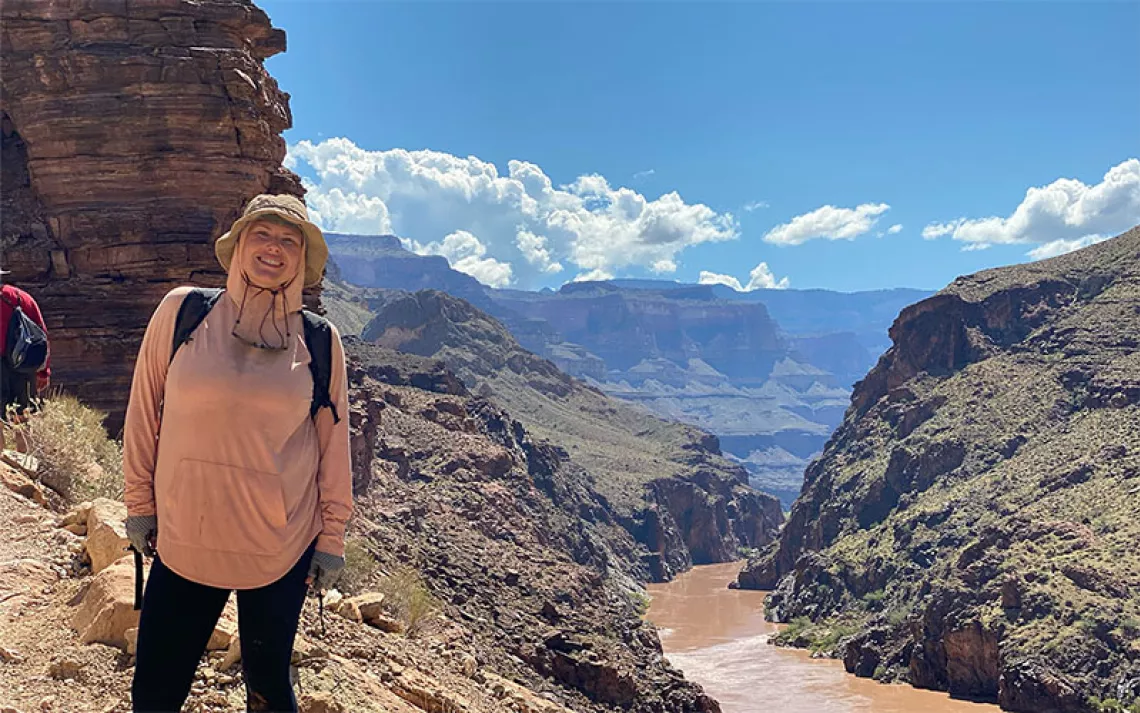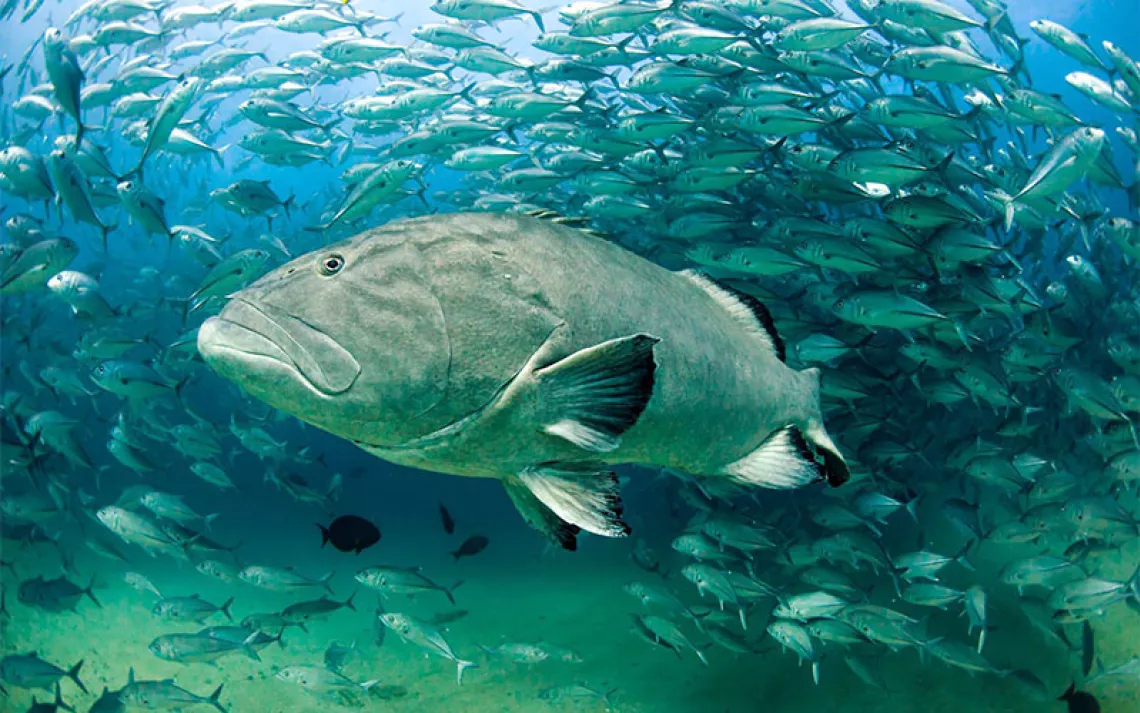ENVIRONMENT EXPLAINED
Thru-Hiking for Type A Personalities
The Appalachian Trail taught me that I don’t need to let go

Photo by Betty4240/iStock
It has become well-accepted scientific fact that hiking can be therapeutic for people. Getting out in nature and getting the blood flowing does wonders for the body, mind, and heart. But thru-hiking—that is, backpacking a long distance like the Appalachian Trail or the Pacific Crest Trail from start to finish—can sometimes seem daunting, something only for the wild ones. Who else would willingly leave civilization to carry everything they need on their backs and live in the woods for the better part of a year?
When I was first planning my 2017 thru-hike of the Appalachian Trail, I expected all the other hikers to be the crunchy, granola, salt-of-the-earth type. This is totally not me, and totally not who I surrounded myself with in Washington, D.C., where I’m used to working with other people who work hard and play hard—but mostly work hard. I’m a clean-cut, goal-oriented, list-making, certified type A person and so are many of my friends. Most of them would not fathom leaving secure jobs to go into such an unstructured environment. But completing the Appalachian Trail was a bucket-list item (hence the list-making), and I had to do it—whether I thought I would fit in or not.
I’m here to tell other planners and list-makers that thru-hiking isn’t just for the wanderers. It’s also a prime hobby for people like us.
Before hitting the trail, I used my type A instincts to my advantage and planned as much as possible. I researched, read books from former thru-hikers, preordered the 2017 trail guidebook. And the spreadsheets. Oh, the spreadsheets. I had one that was my intended itinerary, telling how many miles I’d try to hike each day, where I’d camp, how often I’d need to resupply, and the average miles per section of the trail. My gear spreadsheet had the type, brand, cost, and exact weight of every item I packed, down to my toothbrush. A list of contacts along the trail helped put my mom at ease.
I started my thru-hike in mid-March. That’s the most popular time for hikers to start in Georgia on their way hiking north to Mount Katahdin in Maine, so I met tons of people in that first week on the trail. Turns out my expectations about the other hikers were completely wrong. I was pleasantly surprised to find the trail attracts all types. Yes, there were plenty of hippy-dippy, barefoot, vegan vagrants. But there were also recent college grads, high school grads, retirees, mid-career adventurers, serious athletes, and everything in between.
Thru-hiking should be a wanderer's paradise: no rules, no parents, no bosses, no schedule. Type B personalities would be in their element, living each day as it came and planning no further than their next water and snack break. As much as I want to be that person who doesn't worry about where I'll be five years from now, I'm simply not. To my surprise, I wasn’t alone. The very first day, at the very start of the trail, on Springer Mountain in Georgia, I met another D.C. resident who quickly let it be known that she, too, had spreadsheets.
I came to find that, just like it did while I was preparing for the journey, my type A personality worked to my advantage on the AT. If you’re considering a thru-hike for 2018, here are some of my tips and hints for those of you who are a little uptight.
Planning Your Thru-Hike
Sure, you can fly to Atlanta, get an Uber to the top of Springer Mountain, and set off without any plan and still make it to Mount Katahdin by the time Baxter State Park closes in October. I know because I met plenty of people who did just that. But putting in the effort to plan before hitting the ground hiking pays off.
Creating a to-do list made this enormous, lifelong goal seem reachable.
Months in advance, I started researching gear, which led to sponsorships, discounts, and sales. By planning ahead, I saved money and made connections with gear reps who would become my guardians along the way. I talked to tons of AT alumni whom I met through trips to REI, through friends, and through work. Their advice and encouragement made achieving this goal seem real.
If you really love planning, you can buy food supplies in bulk to send yourself along the way, saving time and money.
You can create a budget, guesstimating how much money you’ll spend per day on the trail and each day off the trail when you pass through towns.
There is an endless amount of planning you can do before a thru-hike, and this puts us type-Aers at ease when we kiss civilization goodbye and take our first steps on the trail.
A Day in the Life of a Thru-Hiker
If you’re someone who likes routine, you’ll love long-distance backpacking. Once your body gets used to sleeping outdoors, it’s like clockwork: You rise with the sun and snuggle into your shelter when it’s dark. You know exactly what you’ll eat for every meal. You can plan out how many miles you want to hike and where your destination will be, and find a good pace that works for you.
Create a spreadsheet with your starting location, ending location, daily miles hiked, total miles hiked, and any obstacles along the way. Send it to your friends and family back home so they can keep up and send you care packages along the way. Track your daily routine to find out your average miles per day, your longest and shortest days, the weather patterns, anything. Future thru-hikers will bow to you for creating such a useful document.
Every item you own will have its special place in your pack or on your body. You’ll know exactly what clothing you’ll be wearing (because you’ll probably only have a hiking outfit and a camp outfit) and won’t have excess. It’s nearly impossible to live in clutter and disarray while on the trail—your neatness and organization will serve a bigger purpose out on the trail.
What to Do With Your "Free Time"
When you’re not hiking, cooking, setting up camp, breaking down camp, or socializing with other hikers, you have very precious free time. Free time can be a foreign concept, or even anxiety-provoking, to people with type A personalities. We tend to enjoy being busy and always working toward a goal.
So when I experienced downtime on the trail for the first time, I genuinely blanked on how to spend it. I remember asking my fellow type A trail friend what I should do, and she replied happily, “Organize your food!”
My eyes widened. Why hadn’t I thought of that? I could separate my food into breakfasts, lunches, dinners, and snacks for easy access. I could also plan ahead and create a grocery list for my next resupply. I could plan out my mileage for the next week so I knew when I’d be in town and have access to a post office. I could organize my photos, deleting the duplicates and starring the ones I wanted to send to loved ones.
Again, the opportunities for planning were endless. It kept me busy while also allowing me to prepare to have a more comfortable, enjoyable backpacking trip.
Post-Trail Plans
Now, I wasn’t planning and accomplishing the entire time. I took the time, of course, to jump into freezing-cold rivers, gaze at stars in the middle of the night, (watch other people) build campfires, and complete the half-gallon ice cream challenge. The trail allows a type A person to also let go and embrace their often-hidden type B side. There were days when I hiked and didn’t know where I’d end up camping—and after some time that didn’t bother me at all.
By surrounding myself with people of all personalities, learning that Plan A (and Plan B) don’t pan out every time, and catching the curveballs that nature threw at me, I uncovered the vagabond inside me and found a good balance. I’ll carry that with me off the trail—both on future adventures and in my day-to-day routine.
The best part of crossing off one bucket-list item is that it typically involves uncovering a few more things to add to the list. For me, the next adventure is driving across the country. I’ll do it with a yin and yang of type A and type B tactics.
But let’s be honest, I’ll start by creating a to-do list.
 The Magazine of The Sierra Club
The Magazine of The Sierra Club



